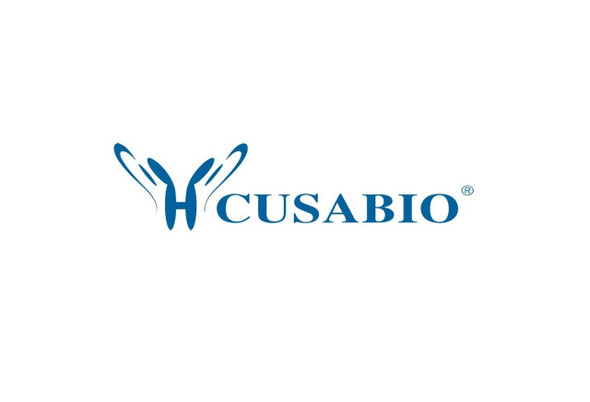Cusabio Human Recombinants
Recombinant Human Krueppel-like factor 1 (KLF1) | CSB-EP619760HUa6
- SKU:
- CSB-EP619760HUa6
- Availability:
- 13 - 23 Working Days
Description
Recombinant Human Krueppel-like factor 1 (KLF1) | CSB-EP619760HUa6 | Cusabio
Alternative Name(s): Erythroid krueppel-like transcription factor (EKLF) (EKLF)
Gene Names: KLF1
Research Areas: Epigenetics and Nuclear Signaling
Organism: Homo sapiens (Human)
AA Sequence: MATAETALPSISTLTALGPFPDTQDDFLKWWRSEEAQDMGPGPPDPTEPPLHVKSEDQPGEEEDDERGADATWDLDLLLTNFSGPEPGGAPQTCALAPSEASGAQYPPPPETLGAYAGGPGLVAGLLGSEDHSGWVRPALRARAPDAFVGPALAPAPAPEPKALALQPVYPGPGAGSSGGYFPRTGLSVPAASGAPYGLLSGYPAMYPAPQYQGHFQLFRGLQGPAPGPATSPSFLSCLGPGTVGTGLGGTAEDPGVIAETAPSKRGRRSWARKRQAAHTCAHPGCGKSYTKSSHLKAHLRTHTGEKPYACTWEGCGWRFARSDELTRHYRKHTGQRPFRCQLCPRAFSRSDHLALHMKRHL
Source: E.coli
Tag Info: N-terminal 6xHis-B2M-tagged
Expression Region: 1-362aa
Sequence Info: Full Length
MW: 52.2 kDa
Purity: Greater than 85% as determined by SDS-PAGE.
Relevance: Transcription regulator of erythrocyte development that probably serves as a general switch factor during erythropoiesis. Is a dual regulator of fetal-to-adult globin switching. Binds to the CACCC box in the beta-globin gene promoter and acts as a preferential activator of this gene. Furthermore, it binds to the BCL11A promoter and activates expression of BCL11A, which in turn represses the HBG1 and HBG2 genes. This dual activity ensures that, in most adults, fetal hemoglobin levels are low. Able to activate CD44 and AQP1 promoters. When sumoylated, acts as a transcriptional repressor by promoting interaction with CDH2/MI2beta and also represses megakaryocytic differentiation.
Reference: "Structural and functional characterization of an atypical activation domain in erythroid Kruppel-like factor (EKLF)." Mas C., Lussier-Price M., Soni S., Morse T., Arseneault G., Di Lello P., Lafrance-Vanasse J., Bieker J.J., Omichinski J.G. Proc. Natl. Acad. Sci. U.S.A. 108:10484-10489(2011)
Storage: The shelf life is related to many factors, storage state, buffer ingredients, storage temperature and the stability of the protein itself. Generally, the shelf life of liquid form is 6 months at -20?/-80?. The shelf life of lyophilized form is 12 months at -20?/-80?.
Notes: Repeated freezing and thawing is not recommended. Store working aliquots at 4? for up to one week.
Function: Transcription regulator of erythrocyte development that probably serves as a general switch factor during erythropoiesis. Is a dual regulator of fetal-to-adult globin switching. Binds to the CACCC box in the beta-globin gene promoter and acts as a preferential activator of this gene. Furthermore, it binds to the BCL11A promoter and activates expression of BCL11A, which in turn represses the HBG1 and HBG2 genes. This dual activity ensures that, in most adults, fetal hemoglobin levels are low. Able to activate CD44 and AQP1 promoters. When sumoylated, acts as a transcriptional repressor by promoting interaction with CDH2/MI2beta and also represses megakaryocytic differentiation.
Involvement in disease: Anemia, congenital dyserythropoietic, 4 (CDAN4)
Subcellular Location: Nucleus
Protein Families: Krueppel C2H2-type zinc-finger protein family
Tissue Specificity: Expression restricted to adult bone marrow and fetal liver. Not expressed in myeloid nor lymphoid cell lines.
Paythway:
Form: Liquid or Lyophilized powder
Buffer: If the delivery form is liquid, the default storage buffer is Tris/PBS-based buffer, 5%-50% glycerol. If the delivery form is lyophilized powder, the buffer before lyophilization is Tris/PBS-based buffer, 6% Trehalose, pH 8.0.
Reconstitution: We recommend that this vial be briefly centrifuged prior to opening to bring the contents to the bottom. Please reconstitute protein in deionized sterile water to a concentration of 0.1-1.0 mg/mL.We recommend to add 5-50% of glycerol (final concentration) and aliquot for long-term storage at -20?/-80?. Our default final concentration of glycerol is 50%. Customers could use it as reference.
Uniprot ID: Q13351
HGNC Database Link: HGNC
UniGene Database Link: UniGene
KEGG Database Link: KEGG
STRING Database Link: STRING
OMIM Database Link: OMIM






